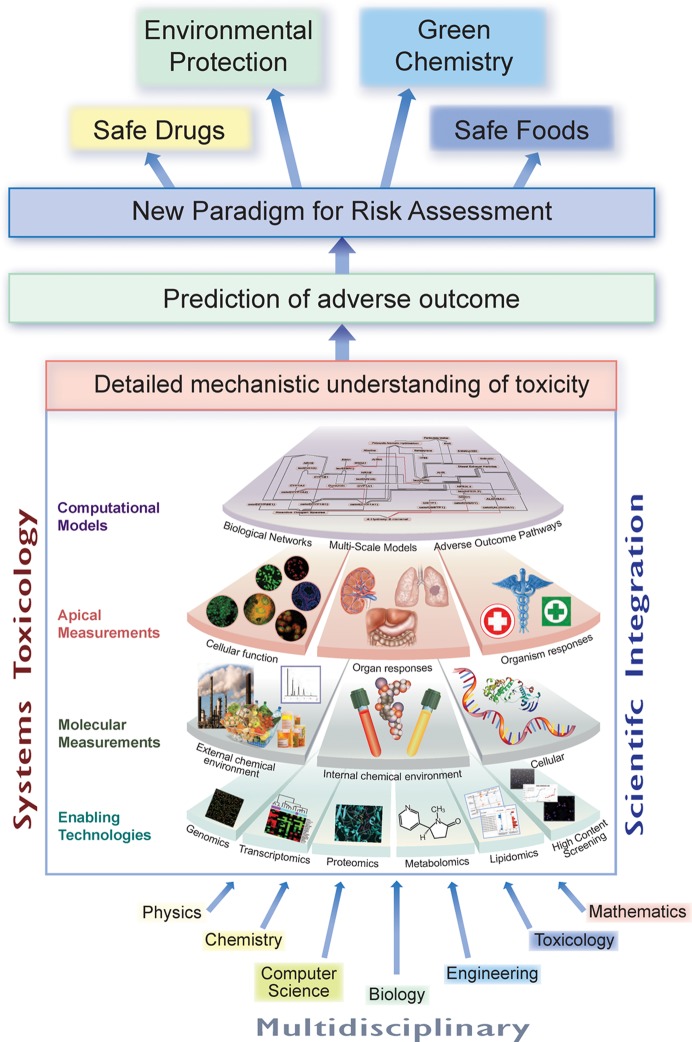Figure 1.
What is Systems Toxicology? Systems Toxicology is aimed at decoding the toxicological blueprint of active substances that interact with living systems. It resides at the intersection of Systems Biology with Toxicology and Chemistry. It integrates classic toxicology approaches with network models and quantitative measurements of molecular and functional changes occurring across multiple levels of biological organization. The multidisciplinary Systems Toxicology approach combines principles of chemistry, computer science, engineering, mathematics, and physics with high-content experimental data obtained at the molecular, cellular, organ, organism, and population levels to characterize and evaluate interactions between potential hazards and the components of a biological system. It is aimed at developing a detailed mechanistic as well as quantitative and dynamic understanding of toxicological processes, permitting prediction and accurate simulation of complex (emergent) adverse outcomes. Thereby, the approach provides a basis for translation between model systems (in vivo and in vitro) and study systems (e.g., human, ecosystem). Systems Toxicology, therefore, has an ultimate potential for extrapolating from early and highly sensitive quantifiable molecular and cellular events to medium- and long-term outcomes at the organism level, and its application could be part of a new paradigm for risk assessment. Artwork by Samantha J. Elmhurst (www.livingart.org.uk).

